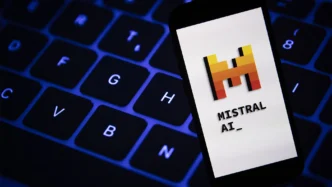Hugging Face has launched the SO-101, a powerful upgrade to its earlier SO-100 robotic arm. Developed in partnership with The Robot Studio and other collaborators, the SO-101 is a 3D-printable, AI-integrated robotic arm designed for researchers, educators, and robotics enthusiasts. It brings advanced features at a fraction of the cost of traditional robotic arms.
At the heart of the SO-101 is its compatibility with Hugging Face’s LeRobot, a PyTorch-based AI robotics toolkit. The arm supports intuitive teleoperation, using a leader-follower arm setup — both equipped with six motors — that allows one arm to control the movements of the other.
This setup enables users to collect movement data by manually guiding the robotic arm. Using this data, neural networks can be trained to replicate and improve these movements autonomously. The workflow, thoroughly documented on Hugging Face’s GitHub, includes steps for calibration, data collection, model training, and real-time performance testing. All data and models can be shared via the Hugging Face hub, encouraging collaborative development.
Notably, the SO-101 can learn tasks such as placing a Lego block into a container after just one demonstration, completing the learning process within minutes using a standard consumer computer. This speed and efficiency make it ideal for prototyping and classroom instruction.
Key Features and Technical Enhancements
The SO-101 introduces numerous improvements over its predecessor:
- Redesigned wiring system: Fixes previous disconnection issues and enhances mobility, particularly at joint three.
- Optimized gear ratios: Removed the need for external gearboxes in the leader arm.
- Enhanced motors: Reduces internal friction while increasing weight support.
- Simplified assembly: Users no longer need to disassemble gear mechanisms during setup.
The robotic arm also integrates camera-based vision, enabling it to recognize and manipulate objects. It’s compatible with LeKiwi, a mobile base powered by Raspberry Pi, making the arm capable of full autonomous navigation.
Pricing and Accessibility
The SO-101 aims to make advanced robotics affordable. The basic version starts at around $100, while fully assembled kits with upgraded features range up to $500. This is a dramatic contrast to the thousands typically spent on industrial robotic arms.
Seeed Studio is currently offering the SO-101 motor kit at a discounted pre-order price of $220 (down from $240), with optional 3D-printed parts available for an additional $35.
There are two main editions:
- Standard Arm Kit: Both arms run on 5V power supplies.
- Pro Edition: The leader arm runs on 5V, while the follower arm uses 12V for greater performance.
This energy-efficient design supports stable operation without compromising mobility or learning accuracy.
How It Compares to Competing Robotic Arms
Several educational robotic arms compete in the market, including the Niryo Ned2, Dobot Magician, and uArm Swift Pro:
- Niryo Ned2 ($4,000+): Offers high precision (±0.5mm) and an aluminium frame, but its price limits accessibility.
- Dobot Magician ($1,700): Great for STEM use with plug-and-play functionality and end-effector versatility, but lacks open-source AI compatibility.
- uArm Swift Pro (~$1,000): Focused on precision tasks, but not geared toward machine learning experimentation.
In contrast, the SO-101 emphasizes AI experimentation, open-source tools, and affordability. It’s designed for those who want to explore reinforcement learning, neural network training, and real-time robotic control without investing heavily in proprietary hardware.
The SO-101 is designed for a wide range of applications:
- Education: Gives students and instructors a hands-on learning platform for AI and robotics.
- Research: Ideal for machine learning studies, especially imitation and reinforcement learning.
- Prototyping: Allows quick development of automated tasks at low cost.
- AI/Robotics Development: Serves as a testbed for new algorithms and smart hardware solutions.
Thanks to its detailed documentation, community support, and frequent updates, the SO-101 is a valuable tool for rapid experimentation and learning.
With its open-source architecture, AI-first design, and budget-friendly pricing, Hugging Face’s SO-101 robotic arm is democratizing access to advanced robotics. While it may not match industrial models in durability or repeatability, it hits the sweet spot for learning, innovation, and experimentation.
The SO-101 is poised to be a game-changer in AI-enabled robotics. It enables hobbyists, students, and researchers to bridge the gap between machine learning and real-world physical systems — without breaking the bank.













